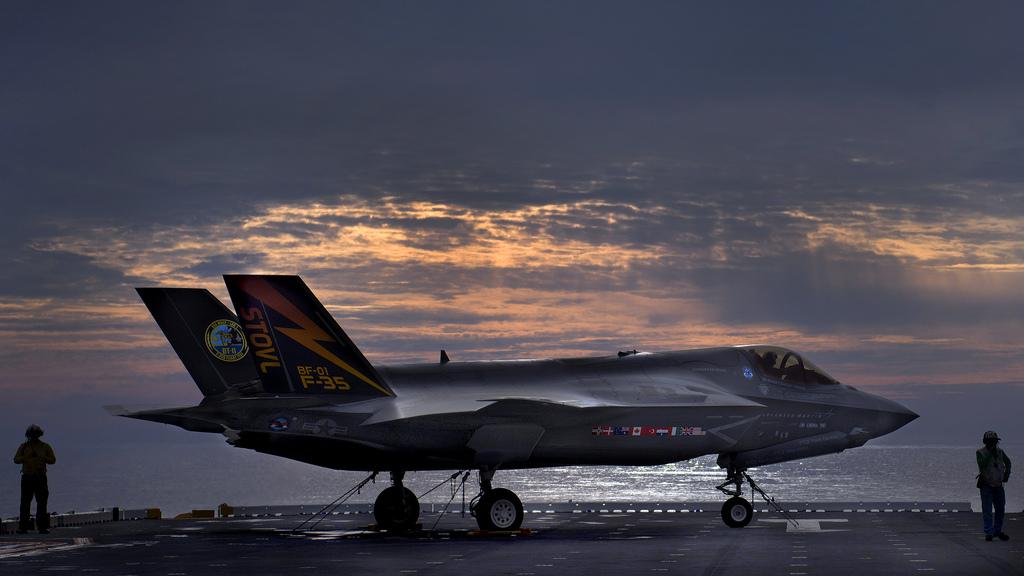 As a military aircraft engineer, I’ve been associated with STOVL aircraft operations for around 30 years, and have worked on the F-35 program. So I’ve followed the current discussions around potential use of F-35B from the Canberra-class LHDs with interest.
As a military aircraft engineer, I’ve been associated with STOVL aircraft operations for around 30 years, and have worked on the F-35 program. So I’ve followed the current discussions around potential use of F-35B from the Canberra-class LHDs with interest.
In my view, it’s remarkable how much the debate focuses on the problems that the aircraft would face in operating from those ships rather than the potential benefits to be gained. Assertions abound about the ‘limited’ nature of F-35B operations from an LHD, and the ‘severe challenges’ involved in generating a militarily ‘decisive impact’ from ‘small’ platforms. And yet for 30 years or more the UK and US (using AV-8Bs and Sea Harriers) have delivered significant operational effect from similar platforms. Clearly, STOVL at sea can work. So I’d like to offer a few observations that might assist and inform the debate.
For STOVL aircraft, the Canberra class isn’t a ‘small’ ship. They’re actually much larger than the RAN’s last carrier, HMAS Melbourne, and significantly bigger than the UK’s highly effective Invincible class. Their flight decks are nearly as big as Wasp class LHDs decks, for which the F-35B was designed. Indeed, the Canberra class actually have more suitable decks for F-35B operations; their ski jumps would deliver significantly improved launch payloads and safer launches. The point here is that STOVL is a truly disruptive technology. It allows LHD-sized vessels to deliver a level of maritime aviation capability previously limited to large conventional carriers.
There are understandable concerns about the F-35B’s jet blast. STOVL operations require nothing like the complex blast deflectors fitted to CVNs, but jet-blast issues have been considered, researched and tested throughout the F-35 programme. In my view, the F-35B’s impact on flight decks is understood and manageable. New and highly effective flight-deck coatings have been tested and trialled. It’s possible that minor ship modifications may be required, including protection for deck equipment, or possibly even deck reinforcement, but measures like those are normal for STOVL operations on ships.
Staying with the engineering aspects, there have been statements about the ‘inability’ to maintain the F-35 on board the LHDs. In fact, the aircraft has been specifically designed to be maintained at sea, and to have a small logistics footprint. It’s true that embarking F-35s would require some changes to existing spaces and facilities—but the RN put Sea Harriers (an aircraft not remotely optimised for maritime operations) on board with minimal ship changes. Lack of space doesn’t mean lack of engineering expertise, nor does it inhibit ingenuity.
Turning to flight-deck operations, it’s been argued that F-35Bs would ‘displace’ other aircraft on the flight deck leading to a ‘loss of capability’. True, some specific capabilities would be constrained. But a different set of capabilities would be gained. We shouldn’t ignore the significant capability the F-35B would bring to the fight, nor overlook the value of being able to tailor the LHD’s ‘air wing’ to meet the (often unexpected) task. Concerns have also been expressed over safely operating both fixed and rotary wing aircraft on a single deck. So let me reassure readers that operating different types of aircraft simultaneously from small spaces is, like handling jet blast, a routine and well-understood aspect of naval aviation.
Any integration of the F-35B with the Canberra LHDs would have to deliver operational impact in an efficient manner. There’s a key point here, not well understood by those unfamiliar with naval aviation, and it’s this: putting aircraft, stores, fuel, weapons, support facilities and personnel into close proximity on a ship allows for high operational tempos. That has been demonstrated for many years, from the South Atlantic to the Bay of Sirte, and from Korea to Suez. The amount of air capability an LHD deck could generate from five to 10 F-35Bs, and the length of time that could be sustained, would startle anyone who hasn’t done ‘STOVL at sea’. Coupling high-sortie rates with the ship’s ability to minimise distance to the target is the essence of naval aviation: proximity equals capability.
In my experience, the key challenge in delivering a viable maritime aviation capability wouldn’t be the equipment, but in re-generating the required naval-aviation expertise. Fortunately, Australia has a strong naval-aviation heritage, and a number of ex-RAN aviators who were (not that long ago) involved in the UK’s Sea Harrier operations. In my view, the Australian Government should assemble some of that priceless experience and put it to work assessing the F-35B/LHD option. Regenerating a fixed-wing naval-aviation capability would be the key to exploiting the F-35B at sea—and I have no doubt the RAN would be equal to the challenge.
Steve George was an air engineer officer in the Royal Navy for 28 years, and served in HMS Invincible during the 1982 Falklands operation. During his career, he was closely involved with the Sea Harrier, and also with joint RN/RAF Harrier operations. Retiring from the RN as a Commander, he joined the JSF programme to work on F-35B ship suitability. He is now an engineering consultant. Image courtesy of Flickr user Marines.